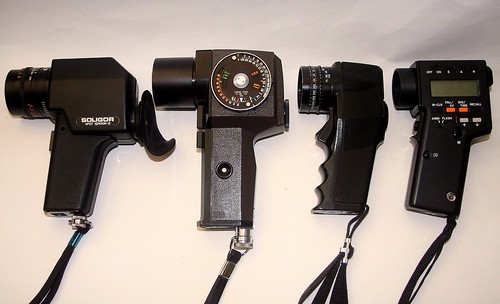Difference between revisions of "Spot meter"
m (simpler wording) |
m |
||
| Line 8: | Line 8: | ||
|image_rights= with permission | |image_rights= with permission | ||
}} | }} | ||
| − | A spot meter is an exposure meter that measures reflected light from a narrow portion of a scene. Compared to more common reflective meters that cover about 25 to 30 degrees, spot meters typically only include an angle of 1 to 5 degrees. Where averaging meters can be fooled by large unusually bright or dark areas, a spot meter permits readings to be taken exclusively from the crucial areas of the subject. However a spot meter may present problems if the chosen area does not represent a scene correctly. | + | A '''spot meter''' is an exposure meter that measures reflected light from a narrow portion of a scene. Compared to more common reflective meters that cover about 25 to 30 degrees, spot meters typically only include an angle of 1 to 5 degrees. Where averaging meters can be fooled by large unusually bright or dark areas, a spot meter permits readings to be taken exclusively from the crucial areas of the subject. However a spot meter may present problems if the chosen area does not represent a scene correctly. |
Users of the Zone System<REF>[http://en.wikipedia.org/wiki/Zone_System "Zone System"] article at [http://en.wikipedia.org/wiki/Main_Page Wikipedia].</REF> frequently employ a spot meter to evaluate the luminance range from the brightest to darkest areas of a subject. | Users of the Zone System<REF>[http://en.wikipedia.org/wiki/Zone_System "Zone System"] article at [http://en.wikipedia.org/wiki/Main_Page Wikipedia].</REF> frequently employ a spot meter to evaluate the luminance range from the brightest to darkest areas of a subject. | ||
Revision as of 04:30, 6 November 2013
This article is a stub. You can help Camera-wiki.org by expanding it.

|
| Spot meters: Soligor II, Pentax Spotmeter V (analog), Pentax digital, and Minolta Spot Meter F image by rst12 (Image rights) |
A spot meter is an exposure meter that measures reflected light from a narrow portion of a scene. Compared to more common reflective meters that cover about 25 to 30 degrees, spot meters typically only include an angle of 1 to 5 degrees. Where averaging meters can be fooled by large unusually bright or dark areas, a spot meter permits readings to be taken exclusively from the crucial areas of the subject. However a spot meter may present problems if the chosen area does not represent a scene correctly.
Users of the Zone System[1] frequently employ a spot meter to evaluate the luminance range from the brightest to darkest areas of a subject.
Notes
- ↑ "Zone System" article at Wikipedia.
Links
Glossary Terms